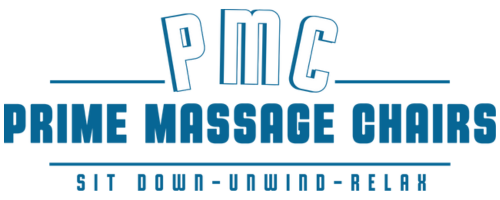
Swedish vs Deep Tissue Massage
In this article we'll be comparing two popular massage styles, Swedish vs Deep Tissue massage.
We'll discuss the differences between the two, helping you find the ideal treatment to ease your tension.
Keep reading to discover which massage style may be right for you.
Understanding Swedish Massage
Swedish massage is a popular type of massage therapy. It helps you relax and boosts your overall well-being.

The massage therapist uses techniques like kneading, long strokes, deep circular movements, and vibration.
These moves warm up the muscle tissue to release tension and break up muscle knots.
You'll feel relaxed as the therapist moves smoothly from one stroke to another.
This kind of massage may help ease pain by improving blood flow and reducing muscle stiffness.
People with high stress or those just looking for a calming experience often choose Swedish massage.
It's also a good choice if it's your first time getting a massage because it’s gentle yet effective.
During the session, therapists may use their hands, fingers, and sometimes even forearms to apply pressure that ranges from light to firm.
As they work on your body, they help improve circulation and flexibility while promoting relaxation.
If you have issues like minor back pain or muscle soreness from everyday activities, Swedish massage could be especially helpful for you.
Understanding Deep Tissue Massage
Moving beyond the gentle approach of Swedish massage, deep tissue massage offers a more intense method to target pain and tension.

This type of therapeutic massage goes deeper into the muscles and connective tissues.
Massage therapists use their fingers, thumbs, fists, elbows and sometimes even props like massage guns to reach deep into muscle layers.
They focus on trigger points where pain is most intense.
Pressure is applied slowly at first then increases so it reaches deeper muscle fibers and tendons.
Many people choose this kind of bodywork to relieve pain, manage high blood pressure or aid injury recovery.
It's not just for athletes; anyone suffering from ongoing discomfort may find relief through deep tissue techniques.
Differences Between Swedish and Deep Tissue Massage

While both are popular techniques, the key distinctions lie in their approach to muscle tension and intended outcomes—discover which massage holds the secret to your relaxation and recovery journey.
Technique
Swedish massage therapists use long glides and kneading motions with their hands, fingertips, and palms. This type of massage includes tapping and shaking techniques to help relax the body.
Deep tissue massages are different. Here, masseuses apply slow, firm pressure using their fingers, thumbs, and elbows. They focus on the deepest layers of muscle tissue to target knots and release tension.
Both methods aim for pain relief but approach it differently. Swedish massage works for overall stress relief and relaxation while deep tissue targets specific problems like chronic pains or sports injuries.
The technique used in deep tissue helps break up adhesions that can limit motion or cause discomfort.
In contrast, Swedish massaging promotes a sense of well-being with lighter strokes aimed at improving circulation towards the heart.
Pressure
Swedish massage often involves light-to-firm pressure designed to promote relaxation and enhance circulation.
It's a gentle approach that soothes your muscles without going too deep.
In contrast, deep tissue massage applies stronger, more intense pressure. Massage therapists use their fingers, thumbs, and even elbows to reach deeper layers of muscle. Their goal is to break up knots and relieve chronic muscle tension.
While Swedish massage helps you unwind and relax, deep tissue targets specific problems such as chronic pain or limited range of motion.
The two types of massages apply different amounts of force on the body for various health benefits.
Pressure in deep tissue work may at times be uncomfortable but it aids in healing injured or tense muscles.
Intended Use
Swedish massage aims to help you relax and boost your circulation. It's a full-body massage that uses techniques like petrissage to ease muscle tension and promote mental clarity.
People who deal with depression, anxiety, or everyday stress often find this type of body massage helpful.
It may also soothe back pain and relieve headaches.
Deep tissue massage focuses on specific areas where you feel chronic pain or tension. This massage therapy digs deep into the muscles and connective tissues to release knots and improve mobility.
Athletes with sports injuries or anyone suffering from conditions such as whiplash, hypertension, myofascial pain syndrome, fibromyalgia, osteoarthritis or carpal tunnel syndrome may benefit from it. Of course, consult with your doctor before starting any massage program if you have pre-existing medical conditions.
If you're dealing with long-standing issues in ligaments or tendons, a healthcare professional might suggest this treatment after physical activity or as part of rehabilitation exercises.
Identifying the Best Massage for Your Needs
Deciphering whether a Swedish massage or deep tissue treatment aligns with your wellness goals is key to maximizing the benefits of your session.

Consider your pain threshold, specific health conditions, and what you're aiming to achieve through massage to make an informed choice that caters to your body's unique demands.
Who is Swedish Massage Best For?
Swedish massage is a fantastic choice for those looking to unwind and ease stress.
If you are feeling anxious, tense, or have been battling headaches, this massage technique may help.
It uses gentle strokes that move towards the heart which may improve blood flow and promotes relaxation.
This treatment can work well for people suffering from back pain or muscle tension due to its soothing effect on the body.
It's also great after a long day or a stressful week as it helps improve your range of motion while calming the mind.
Athletes find Swedish massages helpful too; they use them as part of their warm-up routine to prepare muscles for sports activity.
Who is Deep Tissue Massage Good For?
Deep tissue massage can be great for people who suffer from chronic pain and have limited mobility. It targets deep layers of muscle and connective tissue, helping to ease knots and severe tension.
If you've got a sports injury or struggle with conditions like tennis elbow, this type of massage might offer relief, but consult with your doctor and get approval first.
Frequent strains, muscle spasms, and ongoing lower back pain are all reasons someone may choose deep tissue treatments.
Athletes often use it as part of their recovery process because it can improve flexibility and help heal various injuries related to physical activities.
FAQs
Who should get a Swedish massage?
Anyone who wants to relax their whole body or needs relief from mild tension can benefit from a Swedish massage with its calming techniques.
Is deep tissue massage good for sports injuries?
Yes, athletes often choose deep tissue massages because they help with sports-related muscle recovery using stronger pressure and myofascial release.
Can I do breathing exercises during these massages?
During a Swedish massaged, it's common to do deep breathing exercises; however, you might breathe normally but deeply in response to the pressure in a deep-tissue session.
Which type of massage should runners consider getting?
Runners may benefit from sports massages, which are tailored to their specific needs, often incorporating elements of both Swedish and deep tissue techniques for muscle warm-up and post-exercise recovery.
Conclusion
When deciding on Swedish vs deep tissue massage, it will depend on your particular needs.
Consider Swedish for calmness and mild tension relief. Choose deep tissue to dive into tough knots and chronic pain areas.
Listen to your body, consult with a therapist, and pick the perfect path to rejuvenation. Your muscles will thank you after the right therapy!
Disclaimer:
We do not provide medical advice. The content of this article, including text, graphics, and other material, is for informational purposes only. It is not intended to be a substitute for professional medical advice, diagnosis, or treatment. Always seek the advice of your physician or other qualified health provider with any questions you may have regarding a health condition. Never disregard professional medical advice or delay in seeking it because of something you have read in this article or on our website.
